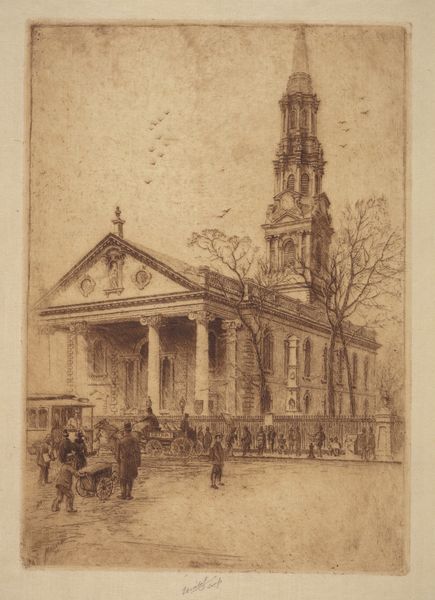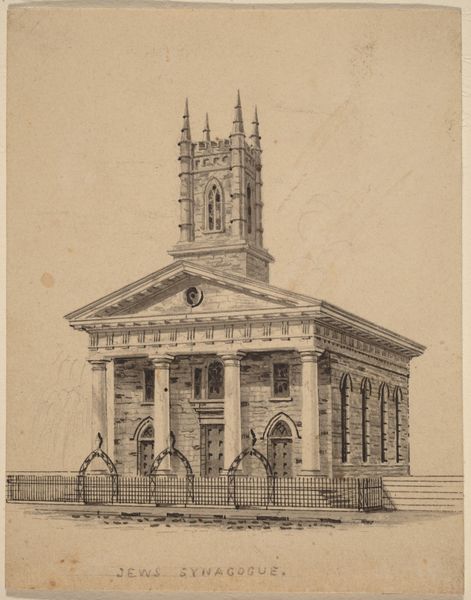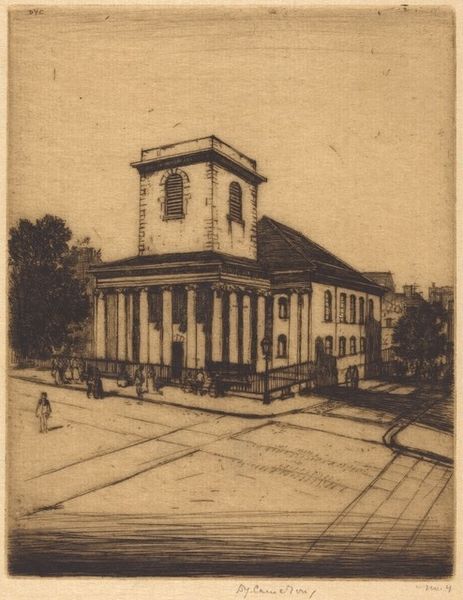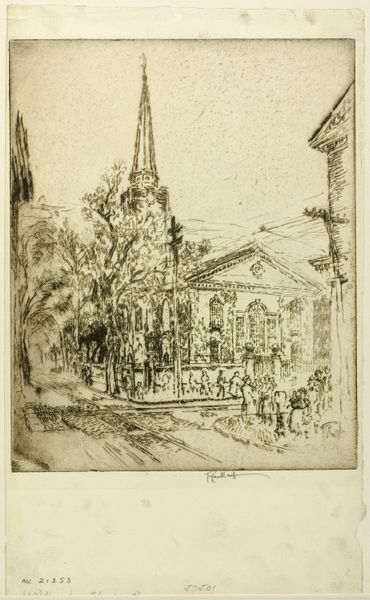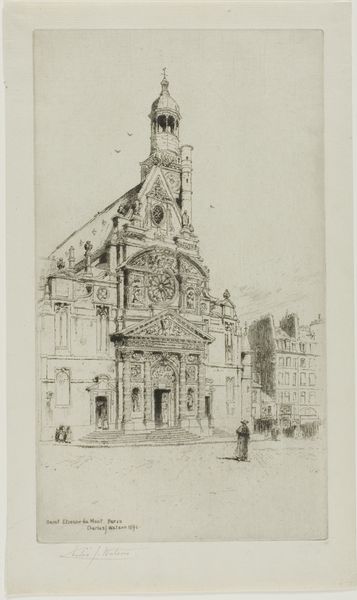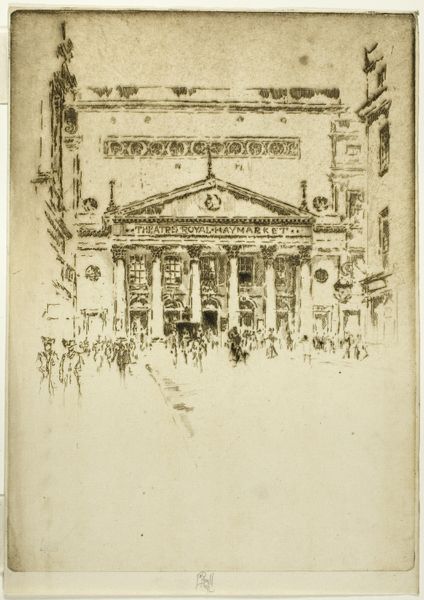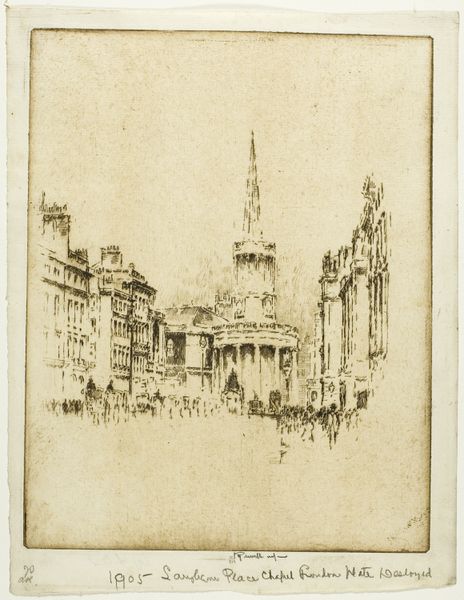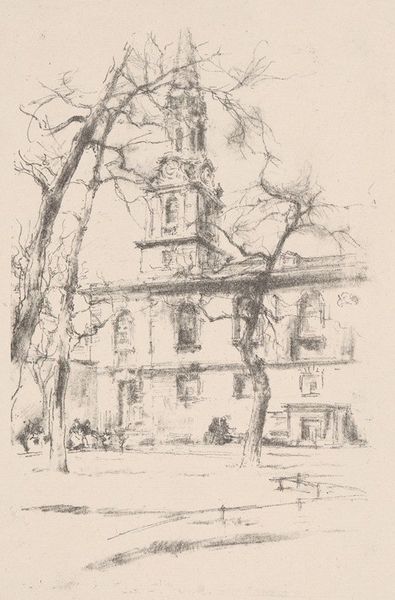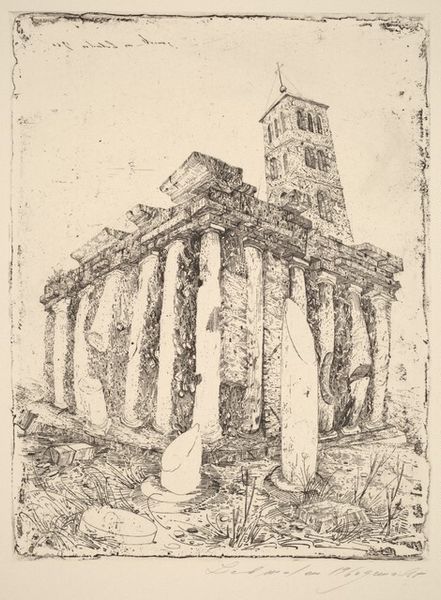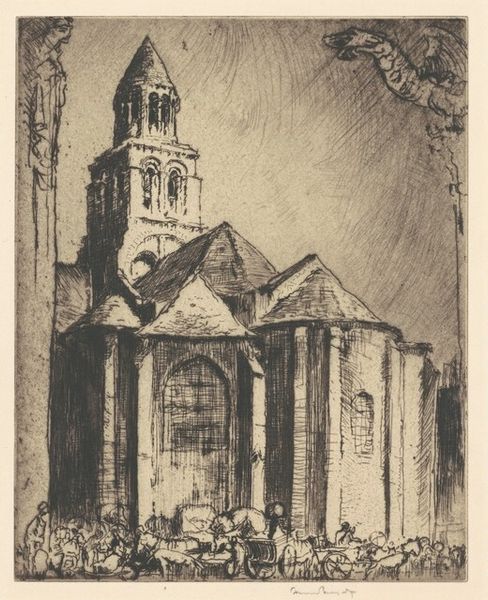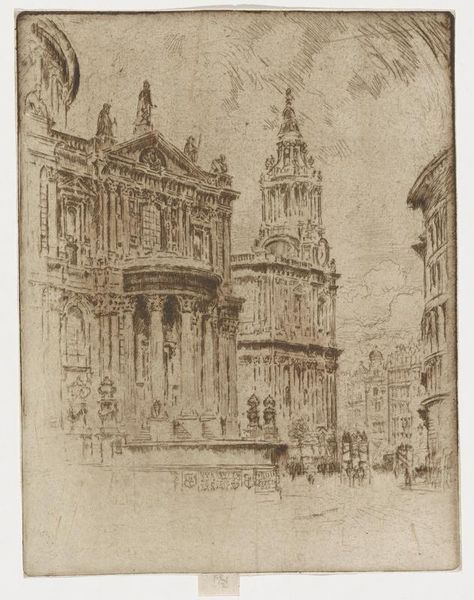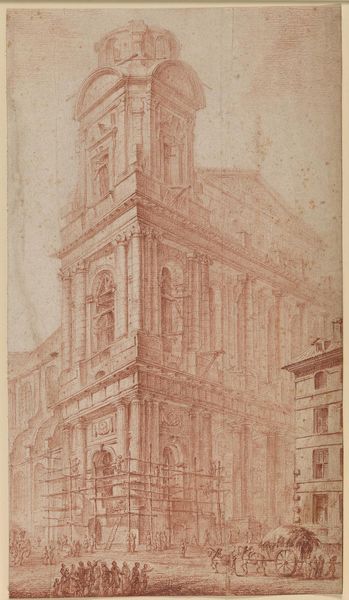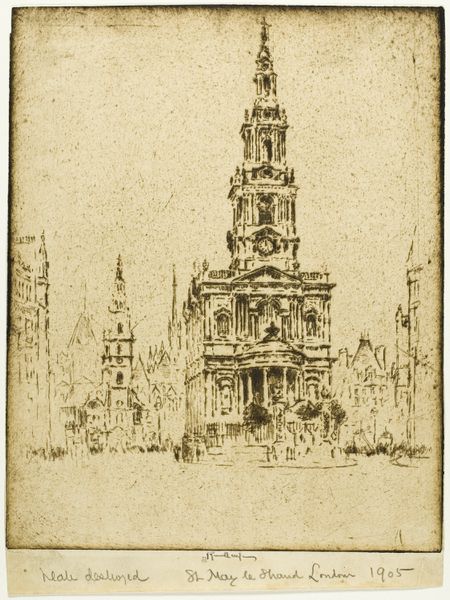
print, etching, architecture
# print
#
etching
#
landscape
#
etching
#
glasgow-school
#
architecture
#
realism
Copyright: National Gallery of Art: CC0 1.0
David Young Cameron created this print of St. Enoch’s Church in Glasgow using etching, a process that gives us insight into both the image and the artist. Etching is an intaglio printmaking technique where a metal plate, often copper or zinc, is coated with a waxy, acid-resistant material called a ground. The artist then draws through the ground with a pointed tool, exposing the metal. The plate is immersed in acid, which bites into the exposed lines, creating recessed marks. The longer the plate remains in the acid, the deeper the lines. The ground is removed, and the plate is inked. The image is essentially made by tiny controlled corrosive actions; the final print is made with great precision to be a reversed impression of the image on the plate. Cameron used these techniques to portray Glasgow’s architecture, but he also engaged in the cultural and political landscape of his time. His artistic choices reflect the tensions between tradition and modernity that resonate even today. Looking at printmaking as an industrial process, and printmakers as skilled workers, allows us to appreciate the work involved, and the place of art in a wider economic picture.
Comments
No comments
Be the first to comment and join the conversation on the ultimate creative platform.
